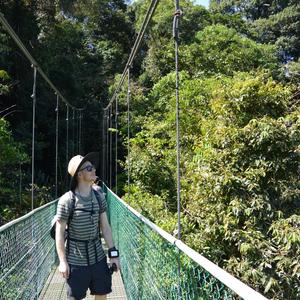This double-landlocked Central Asian country and former Soviet republic is mostly known for its stops along the ancient trade route of the Silk Road like Bukhara, Samarkand and Khiva. Characterised by their mausoleums, madrassas and mosques boasting intricate Islamic architecture and tiled domes, towering fortresses and thriving bazaars, here you can still witness traditional techniques of silk production which has been used for centuries.
But there’s so much more to Uzbekistan than its Silk Road heritage. Get off the beaten path to experience its diverse land from the natural beauty of the countryside to verdant slopes of the Ferghana Valley and the arid landscapes of the Aral Sea. Be charmed by the friendly locals along the way who knows how to make you feel welcome. As an intro to this fascinating country, here are some of the best places to visit in Uzbekistan:
Bukhara

Bukhara was a major staging point on the Silk Road. By about 500BC, it was already an important centre, defended by a citadel that has stood in one form or other ever since. Today it is the site of the Ark Fortress, the residence of the former Emirs of Bukhara, which occupied an area of about 13 hectares.
Many of Bukhara‘s buildings were constructed during the Kharakhanid era (992 - 1211) and there are more than 150 monuments in the city. With its narrow alleyways and bustling bazaars, Bukhara is the quintessential Silk Road city.
Ferghana
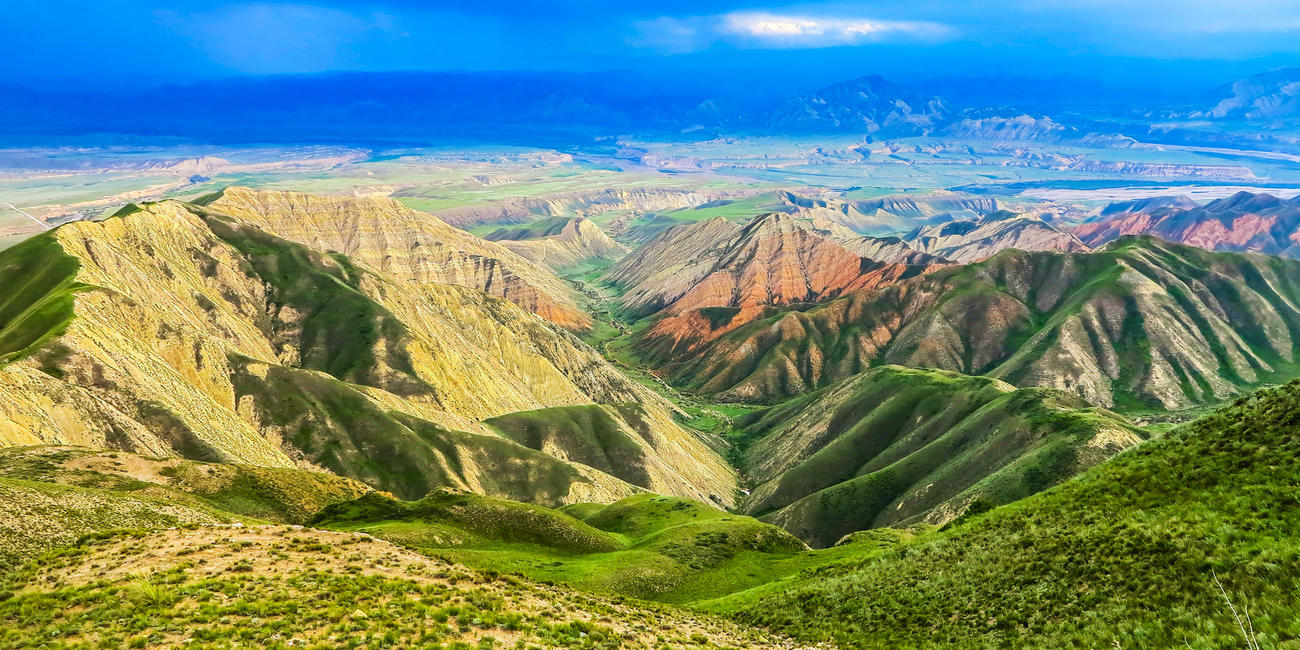
Known as the "Garden of Uzbekistan" the Fergana Valley lies in the eastern part of Uzbekistan between the Tian Shan (Heavenly Mountains) and the Pamir Alay range and is shared with neighbours Kyrgyzstan and Tajikistan. It is the most fertile and populous area of Uzbekistan. Fergana, the largest town in the valley, with its Russian colonial architecture and streets shaded with plane and poplar trees, makes a good base from which to see the older and more interesting towns of Kokand and Margilan.
Khiva
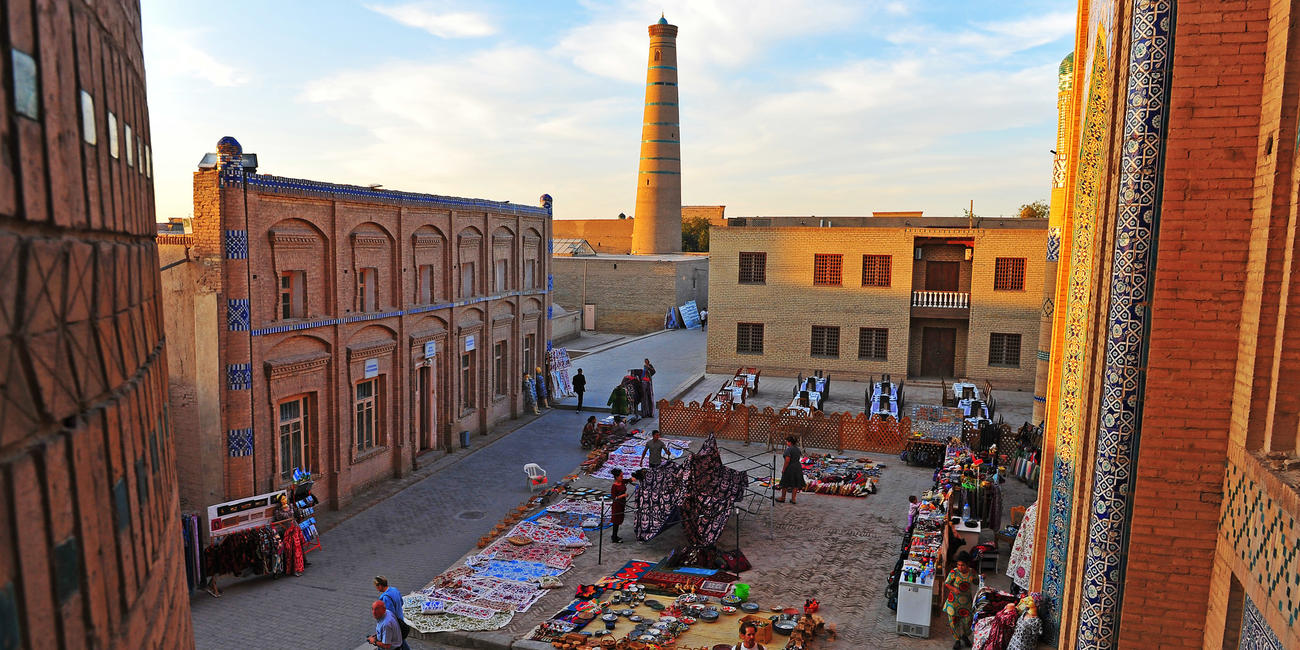
Khiva is a fascinating medieval desert town which has been perfectly preserved. It came to prominence in the 16th century as the capital of the Khans of Khiva whose territory stretched from the Caspian Sea to India and was famous for its religious fervour and slave markets. Khiva's inner walled city or "Ichan Kala" has been described as an open-air museum (or perhaps an abandoned film set). It consists of a maze of narrow medieval streets lined with madrassahs, mosques, caravanserais and palaces.
Kokand
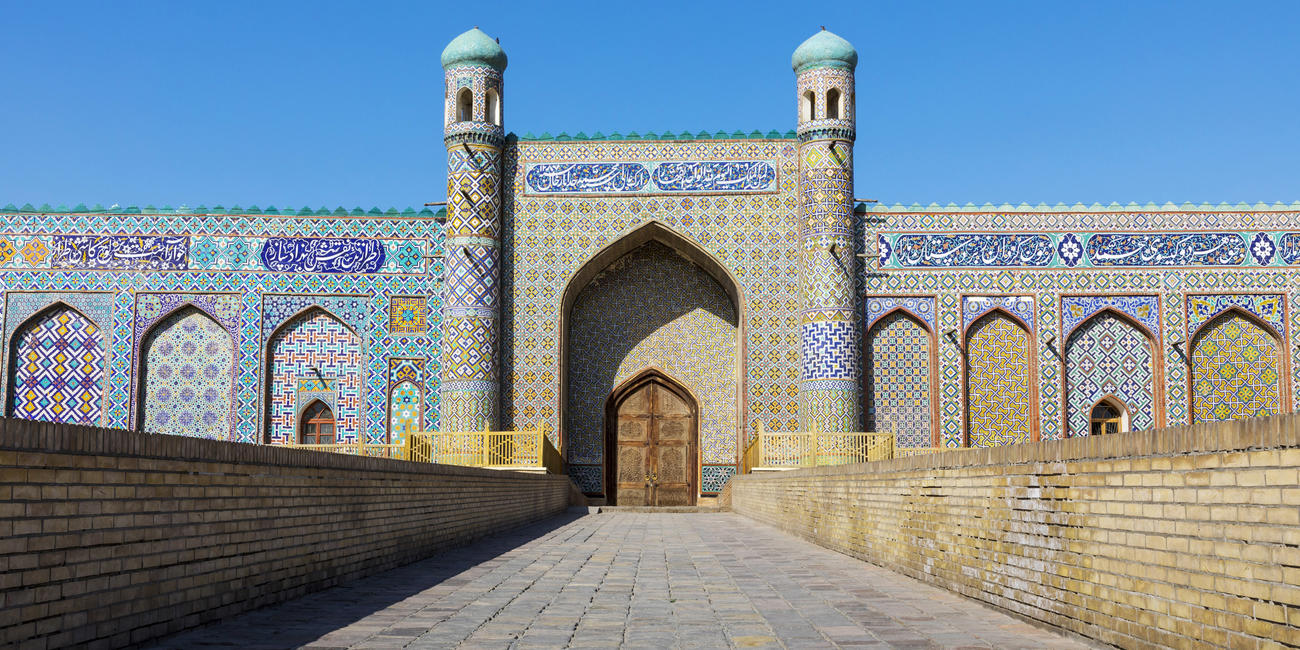
Kokand has existed since at least the 10th century when it was known as Khavakend and was located on a caravan route between India and China. Destroyed by the Mongols in the 13th century, the present city began as a fort in 1732. In 1740 it became the capital of an Uzbek khanate (a state ruled by khans) that reached as far as Qyzylorda to the west and Bishkek, Kyrgyzstan, to the northeast.
The palace of Khudayar Khan sits in the centre of the city. Built by the last Khan of Kokand, Khudoyar, it was completed in 1873 - three years before the tsar's troops arrived, abolished the Khan and blew up his fortifications.
Nukus

Nukus is now the 6th largest city in Uzbekistan but it grew from a small settlement. However, the city's isolation made it host to the Red Army's Chemical Research Institute. The State Museum has artifacts recovered from archaeological investigations, traditional jewellery, costumes and musical instruments, but more interestingly, displays of the area's now vanished or endangered flora and fauna.
The Art Museum is noted for its collection of modern Russian and Uzbek art from 1918-1935. Stalin tried his best to eliminate all non-Soviet art from this period and sent most of the artists to the gulag. The collection at Nukus survived because of the city's remoteness.
Nurata

The Nurata mountain range is home to the Nurata Nature Reserve and many lush green river valleys as well as the ancient town of Nurata, founded by Alexander the Great. Rural Tajik and Uzbek villages are dotted through the valleys and the traditional way of life is very much preserved here; the natural hospitality of the villagers gives visitors the chance to experience the culture first hand.
The area is home to an endangered species of mountain sheep, and the many habitats provide an array of flora, rare endemic tulips and over 300 species of birds. Historic fortress ruins can be found in many of the villages, which lie close enough together to trek between. Lake Aydar lies to the north, a serene, peaceful place for bird watching or swimming.
Samarkand
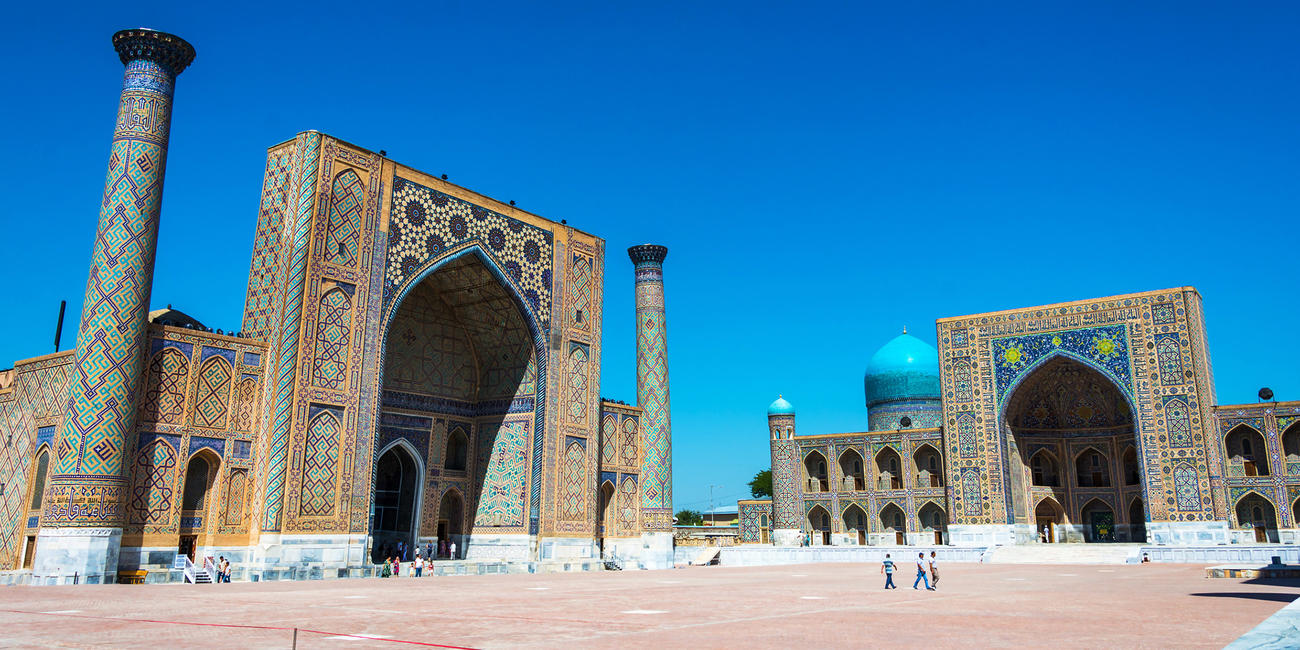
Samarkand is the mythical, evocative name of one of the key trading cities of the ancient Silk Road. With a history dating back 2700 years, Samarkand became famous as the capital of the vast state created by Timur Lang (known in English as Tamerlane) and later ruled by his grandson Ulugbek in the 14th and 15th centuries.
Some of the most magnificent architecture in the Islamic world can be found in Samarkand with some wonderful mosques, mausoleums and madrassahs. Samarkand sits on the banks of the Zerafshan River and to the northeast of the modern town is Afrosiab. This is the site of the most ancient parts of the city, from where the Sogdians, the masters of Silk Road trade ruled.
Shakhrisabz

Shakhrisabz is one of the most ancient cities in Middle Asia. In certain periods through its long history, it appeared as the centre of some of the most important events in world history - sometimes glorious, sometimes tragic. But Shakhrisabz would not be as famous if on 9 April 1346, in the village of Hodja-llgar a certain individual known as Tamerlane had not been born. Wherever destiny took him, Shakhrisabz remained Tamerlane's native city, the place where he spent his childhood and youth.
Notable places of interest include the remains of the once vast Ak-Saray Palace - parts of the portal remain and are evidence of the scale of construction, the Dorus-Syadot mausoleum where Jahangir - the most beloved son of Amir Temur, was buried; and Dorut-Tilavete.
Tashkent
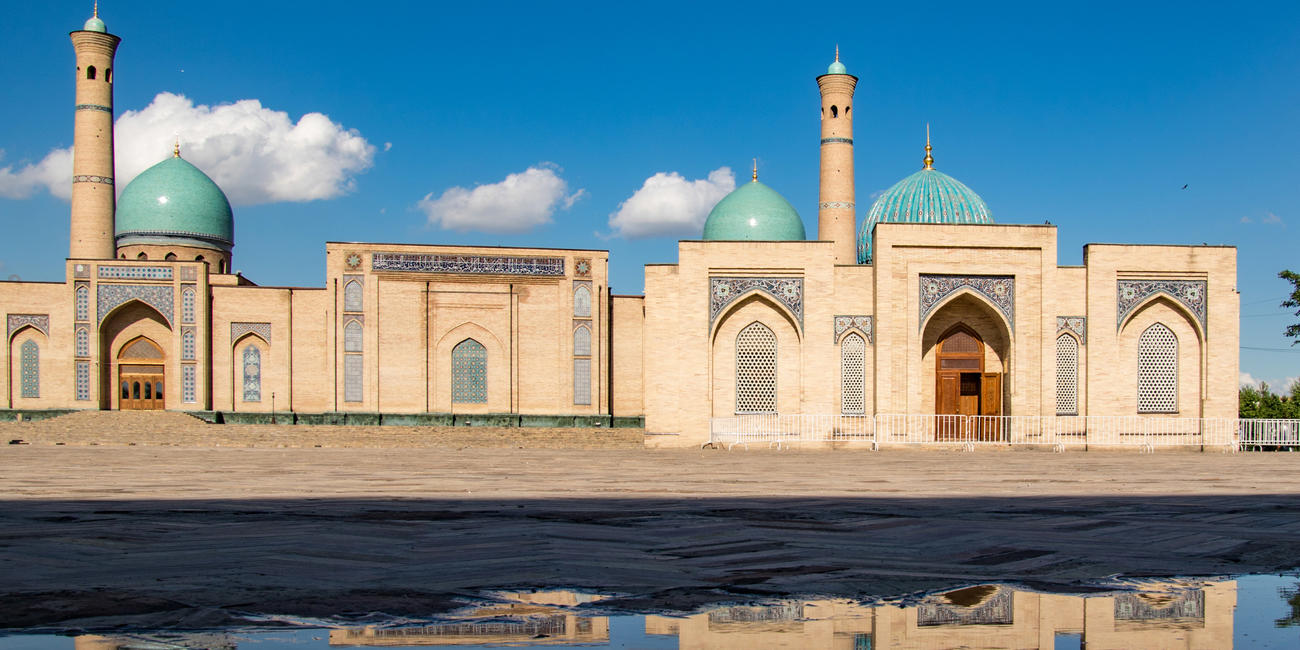
Tashkent, the capital city of Uzbekistan, with a population of more than 2 million, is the major economic, political and cultural centre of the Republic. Its history spans over two millennia, although few monuments from ancient times have survived here. Wars and natural calamities have swept most of the old buildings from the face of the ancient city.
Among the survivors are: The 16th Century Kukeldash Madrassah, the 15th Century Sheikhantaur Ensemble, the 15th Century Yunus-Khan Mausoleum and the Khazrati-Imam Complex. After a disastrous earthquake in 1966, Tashkent was almost totally rebuilt. Modern apartment houses, administrative buildings, new architectural complexes and theatres decorated with traditional tilework make Tashkent an attractive and interesting city.
